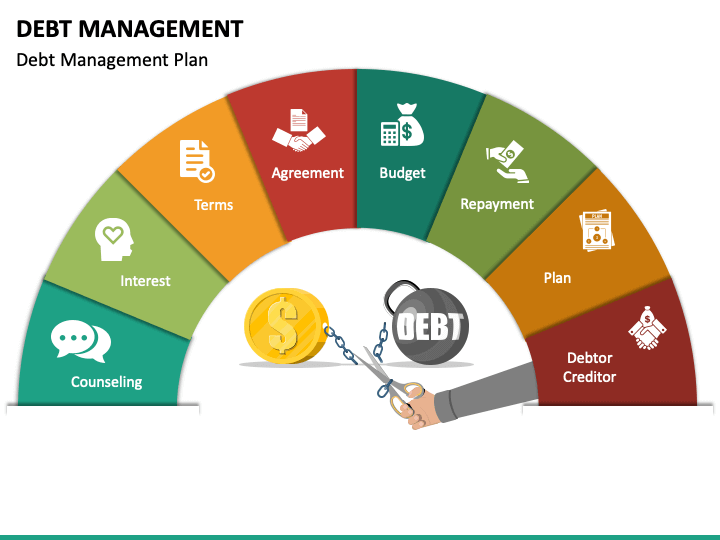Is Financial Obligation Loan Consolidation Right for You? Extra Discussion Posted Here
Is Financial Obligation Loan Consolidation Right for You? Extra Discussion Posted Here
Blog Article
Whatever You Need to Know Concerning Developing a Customized Financial Debt Monitoring Strategy
In the world of personal money, devising a tailored financial debt monitoring plan is frequently the foundation of attaining economic security and peace of mind. By meticulously examining your existing monetary obligations, establishing achievable financial objectives, and crafting a practical budget plan, you lead the way for effective financial debt repayment strategies. However, the journey to economic flexibility is not solely concerning preliminary preparation; it additionally needs recurring tracking and changes to make certain ongoing development. As you browse the complexities of creating a customized financial obligation monitoring plan, recognizing the complexities of each action is crucial to your monetary success.
Examining Your Present Financial Debt Situation
One have to first perform a comprehensive evaluation of their present debt commitments before developing an efficient financial debt administration strategy. Produce a comprehensive checklist of each debt, including the complete quantity owed, rate of interest prices, minimal month-to-month repayments, and due days.
After compiling this info, determine your complete debt-to-income proportion by splitting your month-to-month debt payments by your month-to-month revenue. Recognizing these aspects of your economic circumstance will certainly guide you in establishing a tailored financial obligation management strategy customized to your specific demands and objectives.
Setup Financial Goals and Targets

When setting economic objectives, it is very important to be certain, measurable, possible, pertinent, and time-bound (SMART) For instance, you could set a goal to repay a particular quantity of debt within a specific timespan, such as reducing your credit report card equilibrium by $5,000 in the next year - More Discussion Posted Here. By setting clear targets similar to this, you can track your progression and remain encouraged to achieve your debt administration goals
In addition, consider prioritizing your financial debts based on factors such as passion rates, superior balances, and repayment terms. By concentrating on high-interest debts first, you can save cash in the future and increase your trip towards economic flexibility. Keep in mind, everyone's financial situation is special, so customize your objectives and targets to fit your individual demands and scenarios.
Producing a Realistic Budget Plan
Crafting a well-defined spending plan is a fundamental action in effective debt management and economic planning. A practical spending plan serves as a roadmap for your monetary wellness, assisting you track your earnings, expenditures, and financial debt repayments. To develop a practical spending plan, start by detailing all your sources of income.
Regularly evaluation and adjust your spending plan as required to remain on track with your financial objectives and debt payment strategy. By sticking to a realistic spending plan, you can successfully handle your debt and job towards a more secure monetary future.
Checking Out Financial Obligation Settlement Strategies
After establishing a realistic budget plan, the next crucial action in effective financial obligation administration is to explore various financial obligation repayment techniques. One usual method is the snowball approach, where you concentrate on repaying the smallest financial debts first while making minimal settlements on larger debts. This technique can aid develop energy as you see smaller sized financial debts being removed, offering inspiration to take on larger ones.
One more strategy is the avalanche approach, which includes prioritizing debts with the highest rate of interest. By targeting high-interest financial obligations first, you can reduce the total quantity you pay in rate of interest in time. This approach might be extra economical in the long run, despite check the fact that it might take longer to see private financial debts fully settled.
Financial debt loan consolidation is an additional option where you incorporate numerous financial obligations right into a solitary loan with a reduced rate of interest rate. This can streamline your repayment procedure and possibly decrease the complete rate of interest paid. However, it's vital to meticulously take into consideration the terms and fees linked with consolidation to guarantee it's the right selection for your economic circumstance.
Monitoring and Adjusting Your Plan

Adjusting your strategy may include reapportioning funds to take on high-interest financial debts initially, negotiating with lenders for reduced rates of interest or much better payment terms, or discovering added revenue sources to speed up financial debt settlement. As your economic circumstance advances, your financial debt monitoring strategy need to adjust as necessary to continue to be efficient. By remaining proactive and adaptable in tracking and useful link readjusting your plan, you can maximize your efforts in the direction of paying off your financial obligations successfully and attaining your economic objectives.
Conclusion
Finally, developing a tailored financial obligation monitoring strategy includes analyzing existing financial debt, establishing economic goals, developing a realistic spending plan, checking out repayment strategies, and tracking and changing the strategy as required. By complying with these steps, individuals can take control of their financial situation and work in the direction of ending up being debt-free. It is essential to remain disciplined and committed to the plan in order to accomplish lasting financial stability.
One need to first conduct a thorough analysis of their current financial obligation responsibilities prior to developing a reliable financial debt monitoring strategy.After developing a reasonable spending plan, the next critical step in efficient financial debt monitoring is to discover numerous financial debt repayment techniques - More Discussion Posted Here.To successfully handle your debt, continuous surveillance and adjustment of your financial find out this here obligation monitoring plan are important elements for lasting financial stability.Changing your strategy might involve reapportioning funds to take on high-interest financial obligations first, discussing with creditors for lower interest rates or better payment terms, or checking out additional income sources to speed up financial obligation settlement.In verdict, creating an individualized financial debt management plan includes assessing present debt, setting monetary goals, creating a realistic budget plan, checking out repayment techniques, and tracking and changing the plan as required
Report this page